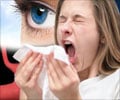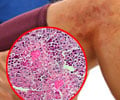New study finds evidence to support the link between the common cold and respiratory infections such as pneumonia and acute bronchitis
New study finds evidence to support the link between the common cold and respiratory infections such as pneumonia and acute bronchitis. The study also shows that the link between rhinoviruses and hospitalizations is especially strong when children have a history of wheezing or asthma.
Rhinoviruses are among the most common viral infections, and are responsible for at least 50 percent of all common colds. Although the association between rhinoviruses and other acute respiratory illnesses in children is increasingly accepted and has been shown in previous reports, the new study is the first to determine age-specific rates of hospitalization across the entire population of two counties.The study, conducted by E. Kathryn Miller, MD, MPH, and colleagues at Vanderbilt University, the Centers for Disease Control and Prevention, and the University of Rochester, surveyed children under the age of 5 years admitted with fever and respiratory symptoms in Davidson County, Tenn. (which includes Nashville) and Monroe County, N.Y. (which includes Rochester) over a one-year period.
Their results showed that of the 592 children involved in the study, 26 percent tested positive for rhinovirus, representing almost 5 rhinovirus-associated hospitalizations per 1000 children. The study detected more rhinoviruses (26 percent) than respiratory syncytial viruses (20 percent), which have been considered the major cause of respiratory infections in infants and children.
These findings are particularly important given the age-specific rates of hospitalization observed. Among children 0-5 months, there were 17.6 hospitalizations per thousand; among those age 6-23 months, 6.0 per thousand; and among those 24-59 months, 2.0 hospitalizations per thousand. Miller remarked, 'This study shows that rhinoviruses are associated with hospitalizations for fever and respiratory illnesses, even in young infants.'
Children with a history of wheezing or asthma had more than eight times as many rhinovirus-associated hospitalizations than those without such a history. Asthma was the only significant factor that distinguished children hospitalized with rhinoviruses from those with other viruses or no viruses. Of those hospitalized with a history of asthma or wheezing, rhinoviruses were found in 36 percent of children aged 0-2 years and in 48 percent of children aged 2-5 years. According to Miller, the finding that asthma was the only risk factor significantly associated with rhinovirus hospitalizations should indicate that 'patients with asthma might be particularly good candidates for prevention and treatment strategies for rhinovirus infection.'
As a next step to their study, Miller suggested, 'additional studies over multiple years in multiple geographic regions are needed to more completely understand the role of rhinoviruses in hospitalizations in children. As discussed in our study, rhinoviruses are sometimes found in healthy children; thus, further studies are required to determine the actual rate of ‘carriage’ in healthy children as opposed to those who are sick or have had recent symptoms of illness. There should also be further investigation into the question, ‘Why are children with asthma disproportionately burdened by the 'common cold' virus?’'
Advertisement
Fast Facts
Advertisement
• The study found 26 percent of the hospitalized children had rhinovirus infections—more than were infected with a virus previously thought to be the main cause of serious respiratory illness.
• Children with a history of wheezing or asthma had more than eight times as many rhinovirus-associated hospitalizations than those without.
Source-Eurekalert
PRI/S











